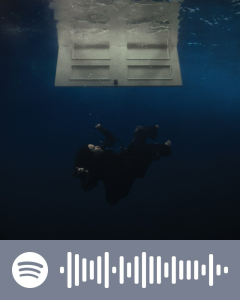Halo Infinite: a promising release
January 9, 2022
This previously ran in our December 2021 print issue.
Halo, a Microsoft-based video game franchise focusing on area shooters, released its eighth game of the series, Halo Infinite, on Nov. 15.
The franchise’s first game, Halo: Combat Evolved, was released in 2001 exclusively for the Xbox. By 2003, it was available to play on computers, as well. However, it has since stayed exclusive to Xbox and PC, never expanding to PlayStation availability.
Halo Infinite is a four-versus-four arena shooter where teams compete in a variety of seven game modes, some of which being “Capture The Flag” and “Oddball.”
With “Capture The Flag,” a player aims to take a flag from the enemy’s base and return it to their team’s base. In “Oddball,” teams score from holding a skull-shaped ball, simultaneously fighting off enemy teams that also seek the ball for points. The first team to reach 100 points wins the match.
This new addition runs smoothly at over 100 frames per second on a mid-to-high-range computer, assuming a player has all graphical settings on low. Players can also easily navigate the menus to personalize their gaming experience. This accessibility makes gameplay easier and allows those not familiar with arena shooters to comfortably adapt to the game’s environment. The gameplay has both a low floor and high ceiling, meaning new and experienced players alike can participate in matches with similarly-skilled players.
When players spawn into the game, they receive a burst rifle, semi-automatic pistol, and two grenades. Alternate weapons like battle rifles and a gravity hammer, which eliminates an enemy with one swing, lay around the map and are available to pick up a few times throughout the match.
It’s important for players to note that Halo Infinite differs from other genres of first-person shooters in the length of time it requires to stamp out enemies. Where it may take less than a second to eliminate an opponent in a tactical shooter, it may take up to ten seconds in this arena shooter.
Although this game is solid, it also has its fair share of issues. The matches can become very repetitive and boring due to the low amount of weapon variety and the small map sizes. This creates a small array of match outcomes that may repeat over and over again.
On a similar note, the overpowered melees have a major impact on the gameplay, as players can lock onto their opponents from unreasonable ranges and take hits that deal damage equivalent to half of a player’s health.
However, it’s important to remember that Halo Infinite is still in its early stages. The franchise holds plenty of time to balance out the game’s flaws and disproportions. In addition, Halo’s games perform under a generally positive reputation in the video game community. Scoring an overall 7/10, Halo Infinite sustains the franchise’s fame and favor. Many anticipate the game to fall close to Halo’s tree of digital, interactive apples.











